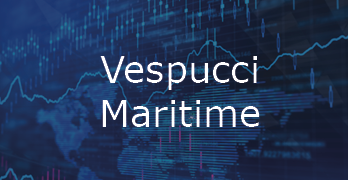FBX Index October 2023: The market at a crossroads

The end of September traditionally marks the end of the peak season as China moves into their one-week Golden Week holiday. It is by now very clear that the peak season was a dud from the container lines’ perspective.
The Asia-to-Europe trade was essentially in freefall in terms of the spot market throughout the month and ended up at levels below what was seen pre-pandemic. The equally important Transpacific trade was also under pressure, although in this case, it would be more correct to state that the rate levels kept seeping to the US West Coast whereas the US East Coast saw a stronger declining trend.
The Atlantic trade, which suffered a complete collapse earlier in the summer, essentially languished at the extremely low level it had bottomed out at.
However, even though looking straight at the spot rate developments paints a bleak picture for the carriers, the reality is worse. Rate levels below or at pre-pandemic levels are evidently not good, but in some cases, spot rates remain somewhat above pre-pandemic levels. However, looking at the carriers’ own financial data shows the magnitude of cost inflation in the market. Hapag-Lloyd serves as a reasonable proxy for the market and the advantage is that they are the carrier, which provides the most detailed breakdown of their operational costs over a longer timeframe. In their case, the operational costs per TEU in Q2 2023 were 29% higher than pre-pandemic. Very broadly speaking this implies that trades where spot rates are not at least 30% higher than pre-pandemic are in a poorer state than in 2019. This applies to a vast number of trades.
Very broadly speaking this implies that trades where spot rates are not at least 30% higher than pre-pandemic are in a poorer state than in 2019. This applies to a vast number of trades.
In broad strokes, the Asia-North Europe trade is affected the worst and is in essence at the same level as seen in the peak season of 2019 before the pandemic. This is problematic as general cost inflation has risen significantly in recent years and furthermore the carriers have had to implement the IMO2020 rules, which means shifting to the much more expensive low-sulphur fuel.
Pacific rates are still somewhat higher than pre-pandemic but they cannot be said to be strong.
However, the situation is much worse in the Atlantic trade from Europe to the US, which is said to have collapsed. Demand in this trade was growing at a healthy clip during the pandemic. Measuring year-on-year demand growth is difficult owing to the large initial pandemic swings. If instead demand on the Europe to North America trade is measured as an annualised average growth versus 2019, then November 2020 saw a growth of more than 10%. During 2021 and into the spring of 2022, the trade showed an average annual growth rate versus 2019 of around 5%, which is a high growth rate for such a mature trade.
Schedule reliability is slowly worsening again. The newest data from Sea-Intelligence shows that 4% of the global capacity remains unavailable due to continuing vessel delays – roughly twice the normal pre-pandemic level.
This is where the market is at a crossroads. It is clear the demand does not support the carriers’ deployment of capacity in their current networks. It is also clear that the continuing delivery of more new vessels will only make this worse. Unless the carriers change behaviour, we could be facing a much more severe downturn in rates in the coming months.
However, the carriers could also choose to remove capacity and this is what is currently happening. The number of sailings being blanked in the wake of Golden Week is higher than usual. New vessels are left idle at times out from the yards rather than being put into service immediately. Schedule reliability is slowly worsening again. The newest data from Sea-Intelligence shows that 4% of the global capacity remains unavailable due to continuing vessel delays – roughly twice the normal pre-pandemic level.
The key to watch is whether the aggressive blank sailings program results in a halt to rate declines during September and potentially begins to reverse the trend despite coming out of the peak season.
Another critical element to note is the implementation of the EU carbon taxation on shipping, also known as ETS. This takes effect in just three months’ time on 1 January 2024. It has been expected that carriers would introduce new ETS surcharges to cover this new cost, and in September Maersk and Hapag-Lloyd were the first movers to announce this. In both cases, they have not yet provided the actual firm surcharge levels but instead provided indications as to the rough levels. They will announce the actual levels one month prior to the end of the year. Shippers should expect all other carriers to follow suit. Shippers should also note there is a large difference in the levels between Maersk and Hapag-Lloyd, and the reality will be that all carriers will have widely different formulas for this, and furthermore that the underlying formulas will be opaque.
About Lars Jensen, CEO, Vespucci Maritime
Lars is a leading expert and thought leader in analyzing global container shipping markets. Lars has 19 years’ experience hereof the last nine within multiple companies he has founded, with the main focus as CEO of Vespucci Maritime.
Receive monthly container market reports direct to your inbox.